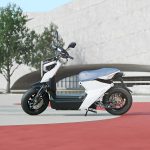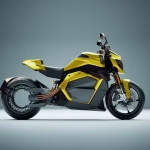Smart infrastructure is revolutionizing urban mobility, creating a seamless connection between vehicles, traffic systems, and city management. Motorcycles, often the fastest and most flexible form of transportation in congested cities, are now becoming part of this intelligent ecosystem. Through integration with IoT sensors, AI systems, and smart traffic technologies, motorcycles are navigating cities more efficiently than ever before.
This transformation isn’t just about convenience—it’s about safety, sustainability, and smarter use of urban space. As cities grow denser and traffic more unpredictable, smart infrastructure is paving the way for a new era of connected riding experiences that prioritize both riders and city dwellers.
The Role of Smart Infrastructure in Urban Mobility
Smart infrastructure refers to interconnected systems that use technology to manage transportation networks in real time. It includes smart traffic signals, adaptive lighting, connected road sensors, and digital mapping systems that communicate with vehicles. These systems collect data from multiple sources, process it instantly, and deliver information that helps regulate traffic flow and improve safety.
For motorcycles, which often face unique risks in city environments, this development is particularly valuable. AI-driven systems can detect approaching riders, reduce blind spots for drivers, and adjust signals based on real-time congestion. This means fewer accidents, faster commutes, and better integration between motorcycles and other modes of transport.
Connected Motorcycles and Smart Roads
Modern motorcycles are increasingly being equipped with IoT-enabled devices that interact with smart roads. These systems transmit data about the motorcycle’s speed, location, and movement patterns to urban infrastructure. In turn, the road infrastructure responds by adjusting signals, offering navigation insights, or alerting riders to potential hazards.
For example, when a smart intersection detects an incoming motorcycle at high speed, it can delay the light change to prevent collisions. Similarly, connected helmets can display alerts when there’s an obstacle or traffic jam ahead. This real-time communication between the bike and the city creates a dynamic feedback loop that enhances safety and efficiency.
Reducing Congestion Through Smart Traffic Systems
Traffic congestion remains one of the biggest challenges for cities worldwide. Traditional systems often rely on fixed timing for lights and static road designs. Smart infrastructure, on the other hand, uses sensors and predictive analytics to optimize flow dynamically. For motorcycles, this means smoother rides and fewer stop-and-go patterns.
Because motorcycles can maneuver through tighter spaces, smart traffic systems can also create priority lanes or timed signals specifically for two-wheelers. This innovation not only saves time but also reduces emissions, as engines idle less and fuel consumption drops. The long-term result is cleaner air and more efficient traffic movement throughout urban areas.
Safety Enhancements Through Predictive Technology
Safety has always been a critical concern for motorcyclists, especially in busy urban areas where visibility and reaction times are limited. Smart infrastructure systems can now predict potential collisions by analyzing traffic movement in real time. Cameras and radar sensors feed data to central AI platforms, which then issue warnings to nearby vehicles or adjust light sequences.
Motorcycles benefit immensely from this predictive capability. For instance, if a car is about to make an unsafe turn across a lane, the system can warn both the car and the motorcycle simultaneously. Such predictive alerts could drastically reduce accident rates and create a safer environment for all commuters.
Environmental Impact and Sustainable Mobility
One of the often-overlooked benefits of smart infrastructure is its contribution to environmental sustainability. With improved traffic flow, reduced idling, and optimized routes, motorcycles consume less fuel and emit fewer pollutants. This efficiency aligns perfectly with the global shift toward green mobility and carbon-neutral cities.
Electric motorcycles, in particular, are thriving in this ecosystem. Smart grids and charging networks powered by renewable energy sources are being integrated into cities, allowing riders to charge quickly and efficiently. As infrastructure becomes smarter, the entire motorcycle ecosystem—from manufacturing to riding—moves closer to a sustainable future.
Integration with Smart Parking and Navigation
Finding parking in crowded cities is a constant frustration for riders. Smart infrastructure is tackling this issue through intelligent parking systems that guide motorcyclists to available spots using real-time data. Riders can access this information through apps or smart helmets, saving time and reducing unnecessary circling around the block.
Navigation has also become more advanced, with real-time route adjustments based on traffic patterns, weather conditions, and road closures. These technologies enhance convenience and reduce rider fatigue, allowing for smoother and more predictable commuting experiences.
Challenges in Implementation
While the benefits of smart infrastructure are evident, several challenges still exist. High implementation costs, complex data integration, and privacy concerns are among the top barriers cities face. Developing nations, in particular, struggle with upgrading older infrastructure to accommodate smart systems.
There’s also the issue of standardization. Without common communication protocols between motorcycles, vehicles, and city systems, interoperability can be limited. To ensure long-term success, governments, manufacturers, and tech companies must collaborate to create unified standards that enable seamless connectivity.
The Future of Smart Motorcycling
As cities evolve, motorcycles will play a major role in shaping intelligent transportation ecosystems. Future bikes will likely feature embedded AI that communicates directly with road systems, predicting and adapting to traffic in milliseconds. Riders could receive instant updates about weather, accidents, or road maintenance ahead, allowing for safer and more efficient journeys.
In the long run, these advancements may lead to self-adjusting motorcycles that can automatically optimize braking, acceleration, and stability based on real-time infrastructure data. This evolution will redefine what it means to ride safely and smartly in an urban environment.
FAQs
How does smart infrastructure help motorcyclists?
Smart infrastructure enhances motorcycle safety and efficiency by connecting vehicles with traffic systems. It allows real-time communication that adjusts signals, predicts hazards, and provides navigation updates for smoother rides.
Are smart motorcycles already in use?
Yes, many manufacturers are developing motorcycles equipped with IoT sensors, GPS connectivity, and AI features. These smart bikes can interact with traffic systems and even receive safety alerts through helmets or dashboards.
Can smart infrastructure reduce motorcycle accidents?
Absolutely. By analyzing traffic data and predicting risky situations, smart infrastructure can prevent collisions, warn riders in real time, and ensure smoother interactions with other vehicles on the road.
What role does AI play in connected motorcycling?
AI processes massive amounts of traffic and environmental data to provide insights that improve riding safety and performance. It helps adjust traffic lights, anticipate road hazards, and offer predictive alerts to riders.
Is smart infrastructure environmentally friendly?
Yes, smart systems reduce traffic congestion, fuel consumption, and emissions. They encourage the use of electric motorcycles and enable efficient energy use through smart charging networks.
Conclusion
Smart infrastructure is revolutionizing how motorcycles navigate cities, making urban mobility more efficient, safe, and sustainable. The integration of IoT, AI, and real-time data analytics allows riders to experience faster commutes, fewer risks, and enhanced connectivity with their environment.
As more cities adopt these innovations, motorcycling will become not just a faster way to travel but also a smarter, greener, and safer choice for modern urban life. The collaboration between governments, manufacturers, and riders will be key in ensuring this intelligent transformation benefits everyone on the road.






